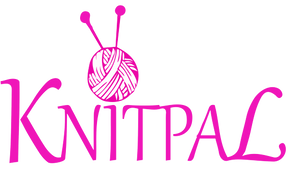
Sources and Sizing of Vintage Knitting Patterns for Adults
Some vintage knitting patterns have a timeless appeal to them and just asks to be knitted again and again. If you’re used to working with vintage patterns, you’ll probably have your box of tricks to get a vintage pattern “translated” to modern yarn and sizes. This article will strive to help the rest of us not only to find those timeless patterns, but also knit them in the twenty-first century.

Where to find quality vintage patterns
Thanks to the internet we now have oodles of vintage knitting patterns and vintage knitting books right at our fingertips. There are a few hidden jewels, however, where you can get quality vintage patterns for free or next to nothing – some of the patterns and pattern books going back to the 1800’s!
The first of these sites are probably already well-known to you – Etsy. Not only great for finding yarn and bespoke knitting needles and crochet hooks, Etsy also has a large range of patterns – including pages upon pages of vintage pattern reproductions. Many of these patterns are really quite cheap and often not found elsewhere.
The second site is Vintage Knits. Some of the vintage patterns are also shown knitted in – shall we say – modern times, using modern yarns. Many patterns are available as free PDF downloads as well and, thanks to all the extra info on the site, makes it a true treasure trove of vintage knitting goodness.
The third site is the Internet Archive. This website’s vast knitting book, knitting magazine, and knitting pattern library are sure to keep your hands busy for years to come! The majority of these patterns are freely available and can be downloaded in different formats, including PDFs.

Finally we have Free Vintage Knitting that contains a vast amount of patterns for all ages and for the home. It will take quite a while to search all of the available patterns (though that’s not necessarily a bad thing!), however, these vintage patterns have been grouped under specific headings to make it much easier to find the type of item or project that you’re looking for. And, as the name implies, the patterns are all free.
Vintage clothing sizes vs. modern clothing sizes
Now that you’ve chosen the vintage pattern that you want to make – for example a sweater – you’ll be confronted with the sizing of the pattern. Stop! Before you cast on for the size you wear, make sure that you’re going by the measurements and not the clothing size number.
The reason for working according to the measurements and not the sizes, are simple – the size numbers have changed over the years and a size 18 in vintage patterns can very well be a size 10 now, with both having a bust measurement of 36 inches!
On the blog Vintage Knits, there is a handy table showing the differences between the clothing size numbers between 1956 and now. Using this table, you’ll see the sizes and their measurements from vintage size 10 to 20. The same measurements, etc. is put in the second table with the modern equivalents. However, the modern clothing sizes range from size 2 to size 20.
How to adapt a vintage pattern to the size you need
When adapting a vintage pattern, it’s important to note that most early vintage patterns give only one size and then sometimes also doesn’t give gauge (read this article on calculating gauge to find out more ). It’s only from about the 1940’s that patterns are given more information regarding measurements and gauge, according to Vintage Knits.

The fashions of the time is very important when you’re also looking for a specific fit of sweater to knit. The roaring 1920’s, with its flapper look, had more of a “boyish”, loose silhouette as opposed to the form-fitting styles of the 1940’s, for example. (When knitting one of these sweaters, it’s also worthwhile to keep in mind how underwear has changed over the decades and how this will influence how a garment will fit now.)
Once you have calculated the gauge of the garment (see this article on how to do this), you’ll be able to calculate how the pattern will need to be adjusted for your own measurements. Because this can be quite involved and you’ll need to have an understanding of how knitting and knitting patterns work technically, we advise that knitters first complete a couple of modern patterns before trying their hands at a vintage pattern. You can then start with a vintage scarf, stole, or shawl where any miscalculations will be more forgiving.
As we’ve discussed in this article on vintage knitting , you’ll have to make various swatches to ensure that your chosen yarn can be used for the pattern you chose.
Once you know what your gauge is and your number of stitches per inch, you can go ahead and take your own measurements. Then it’s just a matter of scaling the pattern up (or down) to match your own measurements.
You can then let other vintage knitting or knitting enthusiasts double-check your calculations before you start. This may spare you frustration and tears in the long run!
